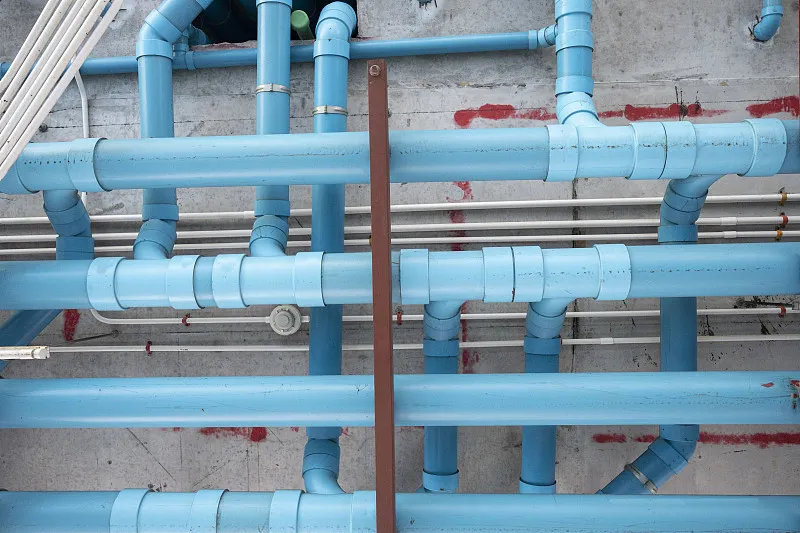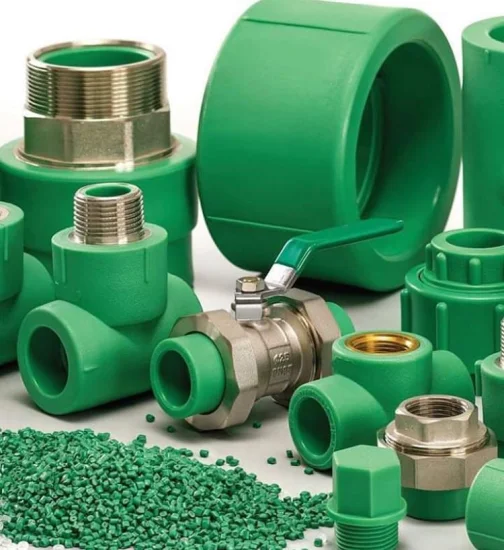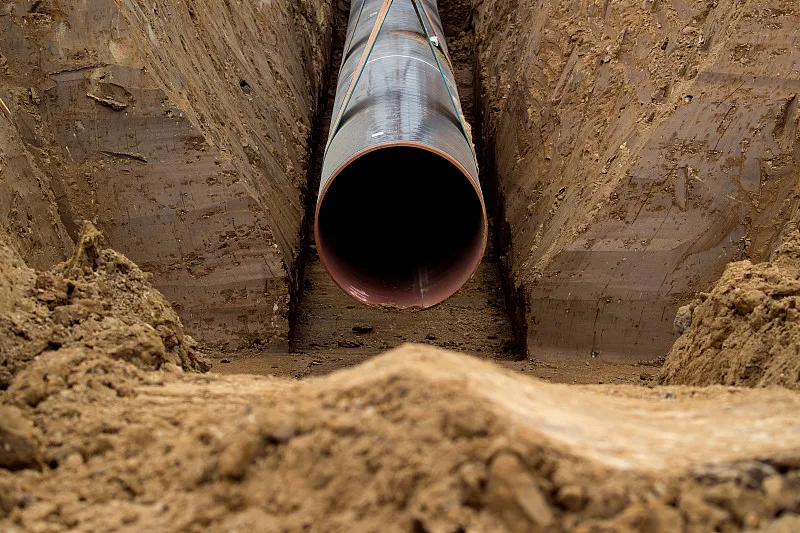Introduction PPR Pipe
In the world of modern plumbing, PPR (Polypropylene Random Copolymer) pipes have gained significant popularity due to their durability, resistance to corrosion, and ease of installation. However, it’s not just the pipes that make plumbing systems function smoothly; the fittings play a crucial role as well. Outlet PPR Pipe fittings are one such category of fittings, designed specifically to ensure a secure and efficient connection between PPR pipes in different configurations, helping direct the flow of water or other fluids within a system.
But what exactly are outlet PPR pipe fittings, and why are they so important? In this article, we’ll dive deep into outlet PPR pipe fittings, their types, benefits, and how they fit into the larger puzzle of plumbing systems.
What Are PPR Pipe?
Before diving into outlet PPR pipe fittings, it’s important to understand what PPR pipes are and why they are so widely used in plumbing.
Definition of PPR Pipes PPR pipes are a type of plastic piping made from polypropylene—a lightweight, flexible material that resists corrosion, scaling, and chemical degradation. PPR pipes are known for their strength and longevity, often lasting upwards of 50 years or more with proper installation and maintenance.
Advantages of PPR Pipe
- Durability: PPR pipes are highly durable and resistant to wear and tear.
- Corrosion Resistance: Unlike metal pipes, PPR pipes are immune to rust and corrosion.
- Temperature Resistance: They can handle both hot and cold water, making them versatile for various plumbing needs.
- Ease of Installation: PPR pipes are lightweight and can be easily welded or joined using special fittings, reducing labor costs.
PPR pipes are primarily used for water supply, heating systems, and various industrial applications.
Understanding PPR Pipe Fittings
PPR pipe fittings are the components that connect, redirect, or alter the flow of fluids within a piping system. These fittings allow plumbers to navigate the different angles and intersections needed in a plumbing system, such as bends, splits, or changes in pipe diameter.
Types of PPR Pipe Fittings
- Elbow Fittings: Used to change the direction of the pipe (e.g., 45° or 90° bends).
- Tee Fittings: Used to join three pipes together, creating a branch in the system.
- Couplings and Reducers: Used to connect pipes of different diameters or to extend pipe length.
- Cross Fittings: A cross-shaped fitting for four pipes to join at right angles.
- Flanged Fittings: Used for larger, high-pressure systems where easy disassembly is required.
These fittings can be made from various materials, including brass, stainless steel, or PPR itself.
What Are Outlet PPR Pipe Fittings?
Definition of Outlet Fittings Outlet PPR pipe fittings are designed to connect PPR pipes to the system’s end point, whether that’s an outlet valve, a faucet, or any other fixture. These fittings ensure the water flows efficiently to the point of use without leaks or interruptions in pressure.
In many systems, outlet fittings are used to divert the flow of water to a secondary line, such as a drain or a different area of the house, depending on the plumbing configuration.
How Outlet PPR Pipe Fittings Work Outlet fittings can be categorized into various types based on their specific function. For example:
- Tap Outlets: Fittings designed for connecting to faucets or water taps.
- Drainage Outlets: Used for guiding water away from the plumbing system.
- Pressure Relief Outlets: Fittings that help relieve pressure in the system, often used in heating or high-pressure water systems.
Outlet fittings play a vital role in ensuring the safety and functionality of the plumbing system. Without proper outlet fittings, water flow could be disrupted, leading to inefficient water usage or even system failure.
Types of Outlet PPR Pipe Fittings
Outlet PPR pipe fittings come in several types, each suited for specific plumbing needs:
- Elbow Fittings: Used to change the direction of the pipe at a fixed angle (e.g., 45° or 90°). They are essential in systems where pipes need to change direction.
- Tee Fittings: Allow for the splitting of the water flow into multiple directions. These are often used in systems where one main line branches into two or more lines.
- Cross Fittings: Similar to tee fittings but with four outlets, used when a system needs to branch in four directions.
- Reducers: Used when connecting two pipes of different diameters. They help ensure the smooth transition between sizes, which is crucial for maintaining pressure within the system.
- Special Outlet Fittings: These are designed for specific needs, such as drainage systems, where the flow needs to be directed to an external drain, or for high-pressure systems where outlets may need to handle excess pressure.
The Importance of Outlet PPR Pipe Fittings
Outlet PPR pipe fittings are vital for several reasons:
- Water Flow and Pressure Regulation: They ensure the water flow remains constant and pressure levels are controlle.
- Leak Prevention: Well-installed outlet fittings prevent leaks that could damage property or waste water.
- System Longevity: Properly functioning outlet fittings contribute to the overall efficiency and lifespan of the plumbing system.
Without outlet fittings, PPR pipe systems could not operate as effectively, potentially leading to leaks, reduced water pressure, and expensive repairs.

Installation Process for Outlet PPR Pipe Fittings
Installing outlet PPR pipe fittings is relatively straightforward, but it does require precision to ensure a leak-free system. Here’s a simple overview of the process:
- Prepare the Pipe: Cut the PPR pipe to the required length using a pipe cutter.
- Prepare the Fitting: Ensure the fitting is clean and ready to be joine with the pipe.
- Fusion Welding: Use a special heat fusion tool to weld the PPR pipe and fitting together. The tool heats both components, causing them to soften and fuse together.
- Allow to Cool: After fusion, let the joint cool and solidify. This ensures a permanent, secure bond.
Proper installation is critical to avoid common mistakes, such as incorrect alignment or inadequate heating during the fusion process.
Advantages of Using Outlet PPR Pipe Fittings
There are several key benefits to using outlet PPR pipe fittings:
- Durability: PPR fittings are resistant to rust, corrosion, and high pressures.
- Ease of Installation: The fusion welding method is straightforward, reducing installation time.
- Cost-Effective: PPR fittings are affordable and widely available, making them a cost-effective solution for plumbing needs.
- Environmental Benefits: PPR is an environmentally friendly material, as it can be recycle and doesn’t leach harmful chemicals.
Potential Issues with Outlet PPR Pipes Fittings
While PPR pipe fittings are generally reliable, there are some potential issues:
- Poor Installation: Incorrect fusion welding can lead to weak joints and leaks.
- Defective Fittings: Low-quality fittings or counterfeit products may fail prematurely.
- Environmental Damage: Exposure to UV rays can cause degradation of PPR fittings over time.
Regulations and Standards for PPR Pipes Fittings
PPR pipes fittings must adhere to strict standards to ensure their safety and performance. In many countries, these fittings are regulate by national standards, which specify the materials, pressure ratings, and installation procedures.
Conclusion
Outlet PPR pipe fittings play a crucial role in plumbing systems by connecting pipes to various fixtures, regulating water flow, and preventing leaks. Choosing the right fittings, ensuring proper installation, and maintaining the system are all essential for ensuring long-term performance and durability.
FAQs
- What are the common types of outlet PPR pipes fittings?
Common types include elbow fittings, tee fittings, reducers, and cross fittings, among others. - Can I install outlet PPR pipes fittings myself?
While the installation is relatively simple, it is recommende to hire a professional plumber for optimal results. - How long do outlet PPR pipes fittings last?
With proper installation and maintenance, outlet PPR pipe fittings can last for decades. - What are the advantages of using PPR over PVC or metal fittings?
PPR offers better resistance to corrosion, higher temperature tolerance, and a longer lifespan compared to PVC or metal fittings. - Are outlet PPR pipes fittings suitable for both hot and cold water systems?
Yes, PPR pipes fittings are ideal for both hot and cold water applications, making them versatile in plumbing systems.


















